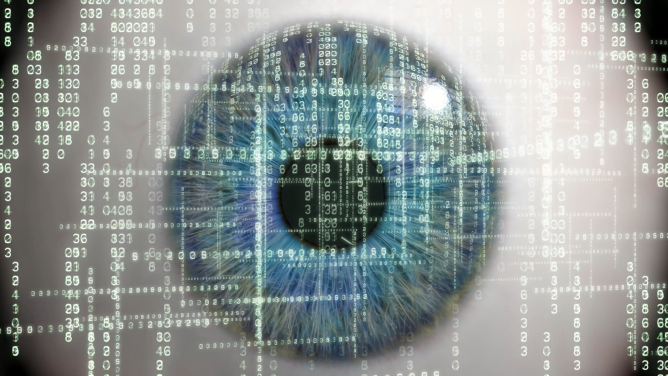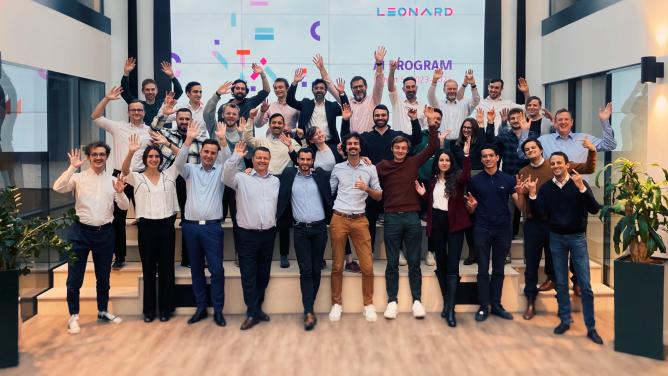From model to digital twin
In 2015 as part of his academic research, the Belgian art historian Andrew Tallon used lasers to scan Notre Dame cathedral in minute detail, resulting in a 3D digital map of the building. After the devastating fire in 2019, the teams tasked with restoring the building are using the (now late) historian’s legacy for their mammoth Building Information Modeling (BIM) task, that is, structuring and visualizing the building’s data (3D model, construction methods, the nature of the structure’s materials and their properties – such as thermal resistance or acoustic performance, volumes and surfaces…). The result came to fruition on the 14th of April last year: Art Graphique et Patrimoine (AGP), in partnership with the CNRS (the French National Centre for Scientific Research), were able to deliver a complete digital model of the cathedral, serving as an invaluable ally for the companies tasked with the restoration project.
BIM’s important role in Notre-Dame’s restoration reflects its growing presence in the world of construction and urban planning today. For example, BIM was used to build the Canopée des Halles, the Cité du vin in Bordeaux, and even Vinci’s future headquarters, l’Archipel, in Nanterre. More recently, more than 70% of the buildings constructed for the new Shanghai Disneyland Park were developed in a BIM environment. At VINCI Construction France, BIM-lead projects represented 30% of turnover in 2019. And many of the group’s major international projects use BIM. This trend is making its way through the entire sector, just take the partnership between Bouygues Construction and Dassault Systèmes, for example. Together, they’re creating a project management platform that will make it easier to create digital twins which evolve in parallel to actual construction work. The two companies are hoping to convince 15,000 users in three years, by highlighting the technology’s ability to provide better quality control.
Although the digital twin comes before the design phase, it also evolves dynamically with it by incorporating changes and events, and even documenting the future deconstruction phase. BIM helps all those within the construction industry throughout a building’s entire life cycle. Not only can you simulate construction, but you can also optimize building performance (energy consumption, security, predictive maintenance, etc.) throughout its entire lifecycle. In other words, it’s a smart building. During the pandemic, the technology proved its worth as it was used to simulate live crowd management in buildings, train stations, and other public areas and analyze health risks, as well as the best way to ensure social distancing.
The data challenge
At the end of 2018, the French government recognized BIM’s competitive potential and launched the BIM 2022 program, releasing €10 million for accelerating the sector’s digital transformation. The aim: to mass-market the use of the 3D digital mockup integrated into a collaborative BIM work process for all construction professionals. While BIM is mandatory in countries such as Sweden, Denmark, and Singapore, it’s currently only strongly recommended in France.
Cutting-edge technology is also reinforcing the trend. Take the startup Discern, the result of a collaboration between VINCI Construction and Chantiers de l’Atlantique, use augmented reality and BIM on construction sites. The objective: to minimize information loss between onsite teams and the design office, by updating the digital model live using augmented reality.
BOS (Building Operating System) is following in BIM’s footsteps and now emerging on the market. Acting as an operating system for smart buildings, it compares BIM data with other sources (such as occupants’ data, like room reservations, lighting, temperature, air quality, connectivity, exchanges with apps outside the building) to break down barriers and provide buildings with self-learning, context-aware services.
However in reality, when it comes to implementing BIM and BOS, there are many obstacles in collecting and processing the necessary data. For BIM to prove its operational relevance, the effort required is twofold: not only does it need to model real-life conditions by extracting data from the site, but it also has to spread information fluidly on the construction site and make it easily accessible. Many startups are now getting in on the action, looking to meet the challenge of real-time information reporting. Take Chronsite, which was part of Leonard’s AI program: it uses cameras and deep learning to identify and measure the duration of tasks onsite. On the BOS side, Spinalcom’s software analyzes the 10 to 20,000 measurement points in each structure in the Archipel building project, to construct a real building operating system.
Continuously collecting and structuring data requires commitment. The immediate benefits exist, such as access to digital onsite plans, but are often minor when compared to the long-term benefits, such as onsite management optimization, which requires data acquisition from several sites in order to extract robust recommendations. It’s not always obvious for all those involved in the project as to the point in collecting data.
There’s also the question of data sharing and compatibility between different users: implementing a BIM approach involves working, in terms of data, with a common language. For example, “U-value” and “thermal transmittance” means the same thing, but a computer program might mistake them for two different inputs, causing duplicates and distorted calculations. Again, this effort around data entry and communication is not so self-evident and calls for incentives.
An asset in improving environmental impact
In theory, the return on investment is important: a report by the Boston Consulting Group published in 2017 showed that adopting digital technologies could reduce construction project costs by up to 20% by 2025. If the debate surrounding the reality of expected cost reductions during the construction phases persists, the savings linked to energy efficiency gains seem much less questionable. BIM and the digital twin provide a fundamental advantage here: simulations to reduce possible energy loss can be made easily, for example, by testing different materials’ environmental performance and thermal insulation.
Building thermal simulation software, such as Archiwizard or Pleiades, can be used within the digital model. This also makes carrying out a building life cycle assessment much easier, as required by the Energy + Carbon- (E + C-) label and designed to help fight the climate crisis in the construction industry. Software solutions that calculate carbon footprint and comply with these requirements, such as Elodie, developed by the Centre Scientifique et Technique du Bâtiment, or Vizcab, from Combo Solutions, are also increasingly being used. By using data from sensors in the physical world, BOS enables a building to further improve its energy footprint during its life cycle. Digital technology’s potential even extends to the end of a building’s life: with BIM, you can determine the amount of waste before demolition occurs.
As public authorities have become increasingly aware of the energy transition potential of these solutions, they’re now trying hard to implement a framework to encourage their take-up. BIMEET is a European project that ran from September 2017 to February 2020, which aimed to provide construction professionals with training in how to calculate energy efficiency using BIM. The building sector is the largest consumer of energy in France, with 46% of national energy consumption. What’s more, the sector emitted a record-breaking 10 billion tons of CO2 worldwide in 2019. The playground for digital tools is immense, and BIM and BOS should assert themselves as important actors for change.


